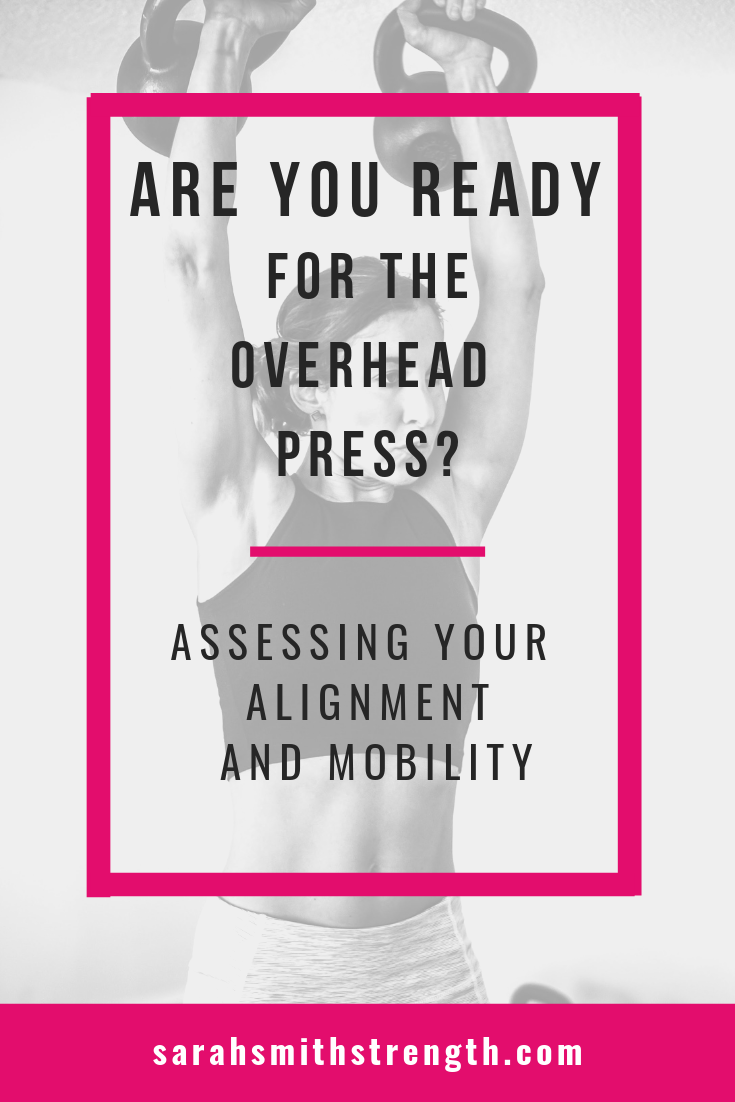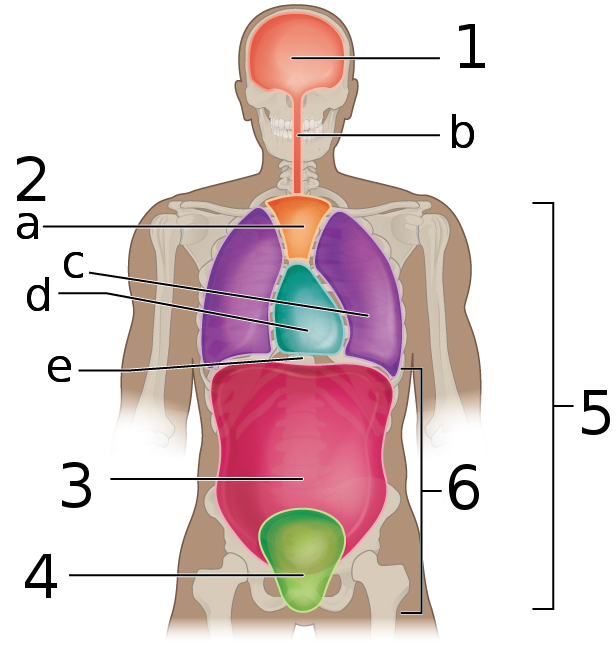I know for certain that my faith in Christ has been the reason why I have been able to move forward and conquer my pelvic health struggles.
And when I say conquer, I don’t mean that there was any miraculous healing or that I am totally free of pelvic health concerns.
Rather I mean that they don’t stress me out or control my mind, my identity, my thoughts or actions in the way that they used to.
For the most part, I move and live confident in my body’s ability to respond well.
I continue to be prudent in my movement and exercise-this means checking my ego, something God probably things is good for me anyways…
I do sometimes fear making prolapse worse.
But overall I don’t live in fear or anxiety of pelvic organ prolapse, because I know that God is in full control of my body and what happens to it and ultimately, I do trust him.
So while I understand that it’s my job to do whatever I physically can in my own flesh to be a wise and responsible steward of my body, I also know that God is in control and his grace covers all my actions.
It is his will that will be done.
Our bodies our like our homes, gifts from God and often a direct result of hard work and investments that we have made.
We wouldn’t not clean our floors, mow the lawn or wash the windows and wait for God to do all that.
But at the same time we know that things like appreciation in value, safety from fire or climatic events are ultimately in God’s control and we have to trust him that whatever happens, his love and grace for us will prevail.
Drawing security from things like homes or bodies strictly based on our own investments and work is flawed logic, because unprecedented things go wrong to perfectly healthy bodies and beautifully kept homes, no matter how responsible we were.
But that doesn’t mean that we should all start living like a bunch of hoarders that trash the place (literally with the house, or metaphorically with our bodies), it just means that we have to resist the temptation to put our faith and trust in creation and ALWAYS focus it on the Creator.
This is the one of the difficult parts of injury, illness and physical catastrophe.
We don’t always know where the line of responsibility and control is.
What is on us and what is on him?
When diagnosed with pelvic organ prolapse (POP), initially I was ready to get to work and find solutions (i.e. I went to PT), but when that didn’t work, I began to give up, mourn, wallow, despair and think that this was going to be my new normal.
There were a few different events and people that crossed my path online that gave me HOPE and inspired me to at least TRY to move forward, but what REALLY helped me to move forward was remembering that God had a plan for my life and I didn’t need to be afraid.
He made my body and my body is smart.
It can in many ways heal itself.
It can be strong.
It doesn’t have to be perfect, pristine or young and unmarred forever to do amazing things.
Not to long ago, someone in my Instagram community reached out to me and asked,
“Where do you go for strength in the Bible when you need to understand why bad things happen to good people? Some days I wonder what he is trying to teach me in all of this.”
Phew!
WHAT A QUESTION! Right?
At that moment I felt such. HUGE responsibility to have a solid, authentic and inspiring answer.
As a Christian, I think that we are often prepared/terrified for the hard questions that will come from non-believers, but the truth is that as members of the body of Christ, we have to ALSO be ready to feed, nourish, love and hash things out with fellow members of the body of Christ.
We all need love, direction, encouragement and hope.
We all need fellow believers that in times of trouble, point us back to Jesus and His word!
And so here was my answer:
——————————————————
“Ahhhh! Such a great question. I struggle with this too! In fact, I just bought a book by Joni Eaereckson Tada (Spectacle of Glory, it’s great!) because I TOO am also working on this and figured, who better to teach me than a woman that became paralyzed in a diving accident and still praises God and does great work!
We live in a culture that tells us everything is for us and about us. Even Christians!
Certain leaders in the Christian world motivate women to take action, but also reinforce the idea that life here on earth is only about happiness and self fulfillment, but there is NOTHING in the Bible that supports that idea.
Our life here is a vapor.
God gives us enjoyment and fun.
He made beauty here and gave us friends, children, spouses, enjoyment health and experiences, but his purpose in making us is for us to worship and choose him, to become holy, even amidst trials and setbacks because life on earth ISN’T THE WHOLE STORY!
Jesus who was perfect suffered here, so we should expect to as well and know that our God will provide what we need to survive and grow.”
Verses that support this:
James 1:2-4
2 Consider it pure joy, my brothers and sisters,[a] whenever you face trials of many kinds, 3 because you know that the testing of your faith produces perseverance.4 Let perseverance finish its work so that you may be mature and complete, not lacking anything.
Psalm 57:2
I cry out to God Most High, to God, who vindicates me.
Jeremiah 32:19
19 great are your purposes and mighty are your deeds. Your eyes are open to the ways of all mankind; you reward each person according to their conduct and as their deeds deserve.
Job 42:2
2 “I know that you can do all things;
no purpose of yours can be thwarted.
Proverbs 16:4
4 The Lord works out everything to its proper end—
even the wicked for a day of disaster.
Proverbs 19:21
21 Many are the plans in a person’s heart,
but it is the Lord’s purpose that prevails.
Romans 8:28
28 And we know that in all things God works for the good of those who love him, who[a] have been called according to his purpose.
Romans 12:2
2 Do not conform to the pattern of this world, but be transformed by the renewing of your mind. Then you will be able to test and approve what God’s will is—his good, pleasing and perfect will.
“But I STILL struggle with it all and when I do, I mourn and have pity parties.
Then I try to ask God for help and perspective.
I find ways to use my injury and all that it’s taught me to help others and grow my trust in Him.”
————————————————————
The Bible says that we can do ALL things in Christ that strengthens us!
This means that we can EVEN move past our injury or chronic illness.
This is not a guarantee that in this life, on this earth we will be able to reverse or completely health what has happened to us.
I feel very fortunate that my movement practice and lifestyle changes have helped me to come back from things like pelvic floor dysfunction, prolapse and major gut health problems.
I still have MAJOR considerations when it comes to my diet, lifestyle and exercise practice-that is, I still have to be careful and care for these injuries and health issues, but overall, I mostly live pretty normal, pain and symptom free life.
I know that not everyone that reads this will necessarily have that, but we have to have HOPE
We have to believe that God’s will prevails and whatever is happening in our lives is according to his purpose and will be the best thing longterm.
Life on earth is NOT our entire life, fellow Christians.
Which to me, actually makes me feel less pressure in some ways as I age and see my youth leaving my body, I remember that this body and this world are not my eternal home so I want to make the most of them while I can, but when they disappoint me, I look to him and remember, He is my home.
He is my security.
He is my future.
“Jesus commands my destiny.
No pow’r of hell, no scheme of man,
Can ever pluck me from His hand;
Till He returns or calls me home—
Here in the pow’r of Christ I’ll stand.”
I’ll leave you with one of my FAVORITE songs for reminding me of this:
“In Christ alone my hope is found;
He is my light, my strength, my song;
This cornerstone, this solid ground,
Firm through the fiercest drought and storm.
What heights of love, what depths of peace,
When fears are stilled, when strivings cease!
My comforter, my all in all—
Here in the love of Christ I stand.
In Christ alone, Who took on flesh,
Fullness of God in helpless babe!
This gift of love and righteousness,
Scorned by the ones He came to save.
Till on that cross as Jesus died,
The wrath of God was satisfied;
For ev’ry sin on Him was laid—
Here in the death of Christ I live.
There in the ground His body lay,
Light of the world by darkness slain;
Then bursting forth in glorious day,
Up from the grave He rose again!
And as He stands in victory,
Sin’s curse has lost its grip on me;
For I am His and He is mine—
Bought with the precious blood of Christ.
No guilt in life, no fear in death—
This is the pow’r of Christ in me;
From life’s first cry to final breath,
Jesus commands my destiny.
No pow’r of hell, no scheme of man,
Can ever pluck me from His hand;
Till He returns or calls me home—
Here in the pow’r of Christ I’ll stand.”
— IN CHRIST ALONE" WORDS AND MUSIC BY KEITH GETTY & STUART TOWNEND COPYRIGHT © 2002 THANKYOU
Contact me about speaking at your women’s group, church, gym, book club, etc,
About Sarah…
Sarah Smith is a Functional Pelvic and Gut Health Educator Level, Strength Coach, Original Strength Pro, Level 2 Russian Kettlebell Instructor and postnatal fitness specialist and functional pelvic floor and with a Masters in Soil Science and Agriculture.
She helps women feel confident, capable, content and STRONG in their bodies!
Sarah is a published author and has a decade experience conducting research at The National Institutes of Health, National Cancer Institute, University of Arizona and North Carolina State University.
She uses evidence-based strategies to help her clients grow strong, and conquer their pelvic floor dysfunction, pelvic organ prolapse, diastasis recti and gut health complications and other injuries or health conditions.
Sarah is a mom to three wild boys and one English Bulldog.
She loves kettlebells, leisure walks, chickens, soil, coffee, not folding laundry and watching people move-in a non-creepy way.




















































